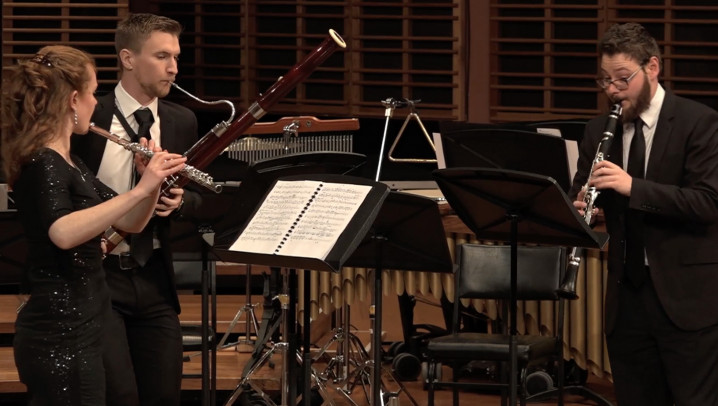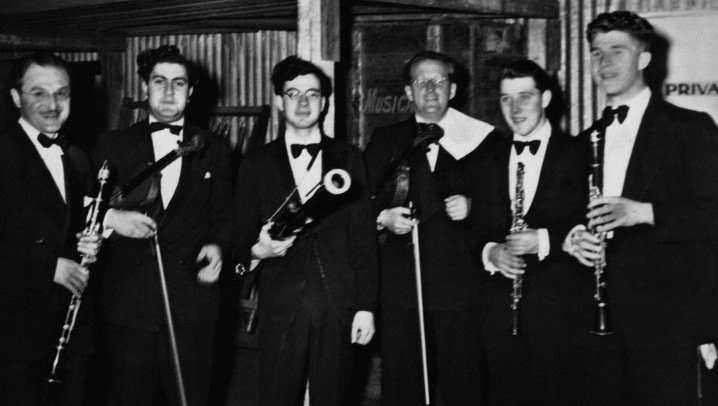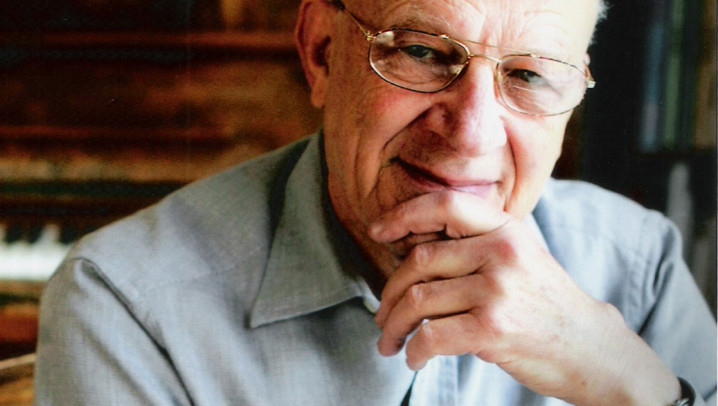Trio for Flute, Clarinet and Bassoon
The first listed composition in George Dreyfus's catalogue of works. Written in 1956.
| Type | Chamber Music |
|---|
I Allegro marziale
II Andante
III Grave – Allegro Giocoso
George Dreyfus’ Trio, typically adroit and entertaining in its writing for woodwind, was composed in 1956 and had its first performances in Perth in February (on radio) and May (at the Adelphi hotel) 1957.
The Trio is the earliest composition to be listed in Dreyfus’s complete catalogue of works (Allans Publishing, 1986). The composer admits to have written music before 1956, but these early works would generally left unfinished. Among these was the setting of Goethe, written in 1950, for soprano and orchestra which shows Mahlerian influences in the melodic outline. He remembers entering and ABC popular song competition in 1953. He submitted a number of entries, writing both the music and texts himself, the latter being of somewhat questionable taste. He won no prizes and was not to return to the field of popular music until 1974, when he ‘hit the charts’ with his phenomenally successful theme for the television series Rush.
The first movement of the trio is in strict sonata form, with its first and second subjects, codetta, development section, foreshortened recapitulation and coda, a structure he was not to return to until his Symphony No 1 ten years later. The first subject, with its alternating major and minor thirds, has all the character of a symphonic march; the second subject, with its creeping semitones, is both tender and affectionate and was much admired by the Australian composer and critic Dorian Le Gallienne.
The slow second movement sets a melody of faintly melancholy character flowing over a short, obsessively repeated bassoon phrase which shifts up and down in pitch to underpinned a feeling of climax and return in the movement’s structure.
The third movement, in Rondo form, reverts to headlong liveliness, not without a hint of desperation in its gaiety, after a comic, mock-suspenseful introduction. Dreyfus, like Ibert in his Divertissement, makes disrespectful references to the Mendelssohn wedding in March in this finale.
A feeling for the grotesque derived from Mahler, the neoclassicism of Stravinsky and Hindemith (a major influence in Australia in the 1950s) and Dreyfus’s own experience as a bassoon player form of the stylistic background for this Trio.
© George Dreyfus




